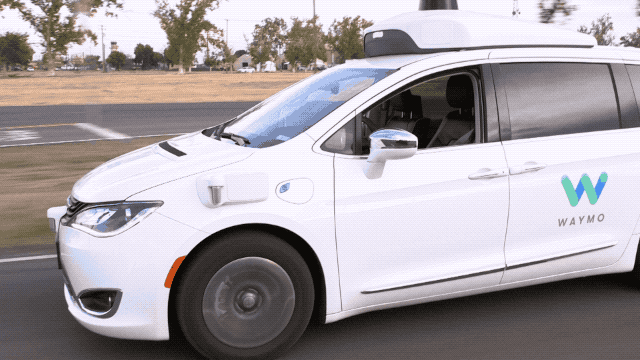
Today was a first for me: I drove in a fully autonomous vehicle on roads without anyone behind the wheel. They weren’t public roads, but they did have intersections, other vehicles, pedestrian traffic, cyclists and more, and the car managed a fairly long route without any human intervention – and without any cause for concern on my part.
I’ve done a lot of self-driving vehicle demos, including in Waymo’s own previous-generation Lexus test vehicles, so I wasn’t apprehensive about being ferried around in Waymo’s Chrysler Pacifica minivan to begin with. But the experience still took me by surprise, in terms of just how freeing it was once it became apparent that the car was handling shit all on its own, and would continue to do so safely regardless of what else was going on around it.
Waymo’s test track at Castle (more on that facility here) included multiple intersections with traffic lights, a roundabout, cars stopped on the shoulder, crossing foot band cycle traffic and more. Even if these were staged, they’d be hard to replicate in exact detail every time, so despite the fact that Waymo clearly had more control here than they would out in the real world, the driving experience was still impressive.

In particular, one event stuck with me: A squirrel (or other small rodent, I’m no expert on the fauna of Northern California) darted out quickly in front of the car, before turning back off the road – but the vehicle perceptibly slowed in case it needed to avoid it. Barring an incredibly lifelike animatronic, this isn’t something Waymo could’ve planned for.
Regarding how it actually works, once in the vehicle and buckled up, a rider taps a button to start the ride, and then displays mounted on the backs of the front seatsshow a visualization of what the car’s sensors see, but selectively simplified and redesigned to draw focus to things that riders find important, and to reassure them about the system’s competence and ability to spot all the key variables on the road.


This is essentially the same car driving riders around Chandler, in Phoenix, where the current Waymo pilot is operating. It’s still essentially a stock Pacifica van, with a premium trim upgrade, but included features in that vehicle, including the many USB ports for charging located throughout, the dual screens mentioned above on the seat backs, and the rear cabin AC and climate controls all make it particularly well suited to the task of putting the rider first.
I also noticed that the Pacifica drove in a manner which itself made me feel more comfortable as a rider, essentially by making it familiar. It edged into intersections cautiously, moved forward slowly when it had the right of way but its path was obstructed by a pedestrian crossing the street, and did a number of other things that made its driving feel more “human” than you might expect from an exacting computer system.
Waymo’s self-driving car ride won’t be my last, and it certainly wasn’t my first – but it was the first that suggested we might be closer than many think to Level 4 autonomous vehicles operating on public roads for a public customer base. When asked directly for a timeline on a public service launch, Waymo CEO John Krafcik declined to even claim a specific year, but he did say it’s probably going to happen sooner than many would believe.